You can contact LEARNZ, part of CORE Education, at:
Postal Address:
PO Box 13 678,
Christchurch 8141,
New Zealand
Kia ora koutou,
Yesterday you looked at how people can use trains to move around Wellington. Today you wanted to find out about how rail is used to move freight. The main use of the rail network is to move bulk freight. Rail moves 18 million tonnes each year. You met with Tony Evans from KiwiRail to follow the journey of freight. Tony answered questions from Ranui School during the web conference. He was pleased to discover that this school is close to a railway station and many students use the train. Tony gave some helpful advice about how to stay safe around train stations. You can find out more by listening to the recorded web conference.
More freight less fuel
After the webconference you met John Burns who works in the KiwiRail mechanical depot. He gave you all the high-vis safety gear you needed for a tour of the depot. You could see where locomotives (the engines that pull carriages) come into the depot for refuelling after each trip. It was amazing to see the huge fuel tanks at the base of the locomotive. These tanks hold around 5,000 litres of diesel which is more than enough for a large freight train to get from Wellington to Auckland. This might sound like a lot of fuel, but trains are much more efficient than trucks. Diesel locos emit 66 per cent less carbon dioxide than freight trucks per tonne carried.
Fit for service
John took you under a loco to show how they are checked. Like a car a loco is regularly checked to make sure it is fit for service. Brake checks are particularly important because trains are very heavy and take a lot of stopping. It was interesting to see that trains carry sand to spread on the tracks to increase grip in slippery conditions. This sand is automatically released if the emergency brake is applied. Another safety feature onboard the loco is a tracklog. This device is like the black box in an aeroplane and records information about every journey and what the driver does.
Moving freight
You caught up with Tony in the freight yard to see how freight is loaded on to trains. Freight can be carried in containers and specially built wagons. The main types of freight include logs, milk products, meat, steel and export goods. Every week more than 900 freight trains, nearly 130 a day travel on the New Zealand rail network. These freight trains take trucks off our roads, reduce carbon emissions and reduce road maintenance costs.
Between islands
The amount of freight moved by rail is expected to grow. You met Allan Hooper who runs the interislander terminal to see how freight is moved between the North and South Island. Allan showed you how a remotely controlled loco loads and unloads wagons on the ferry. It was incredible to see how much the ferry can hold. Two new ferries will be arriving soon These ferries will be able to carry even more freight and will cost less to run. You can find out more by watching the video.
Cross safely
You finished the day out at Tawa. You were keen to see how locals used the new rail crossing. This level crossing has automatic gates for pedestrians. The gates close when there is a train approaching and the warning bells ring. You might think that it would be hard to ignore these warnings but Megan from TrackSAFE explained otherwise. Some people wear headphones and forget to look for trains. People also can forget to look both ways. When there are two sets of rail tracks there can be two trains, so people need to check. When you’re a passenger in a car you can also help the driver by reminding them to check for trains and not cross the yellow lines until the area ahead is clear. Watch the video to find out more about safely crossing rail tracks.
Tomorrow you will head back to Wellington Station to book a train trip out of the city. It will be a great opportunity to explore sustainable travel options and think about the future.
See you then,
Shelley the LEARNZ field trip teacher.
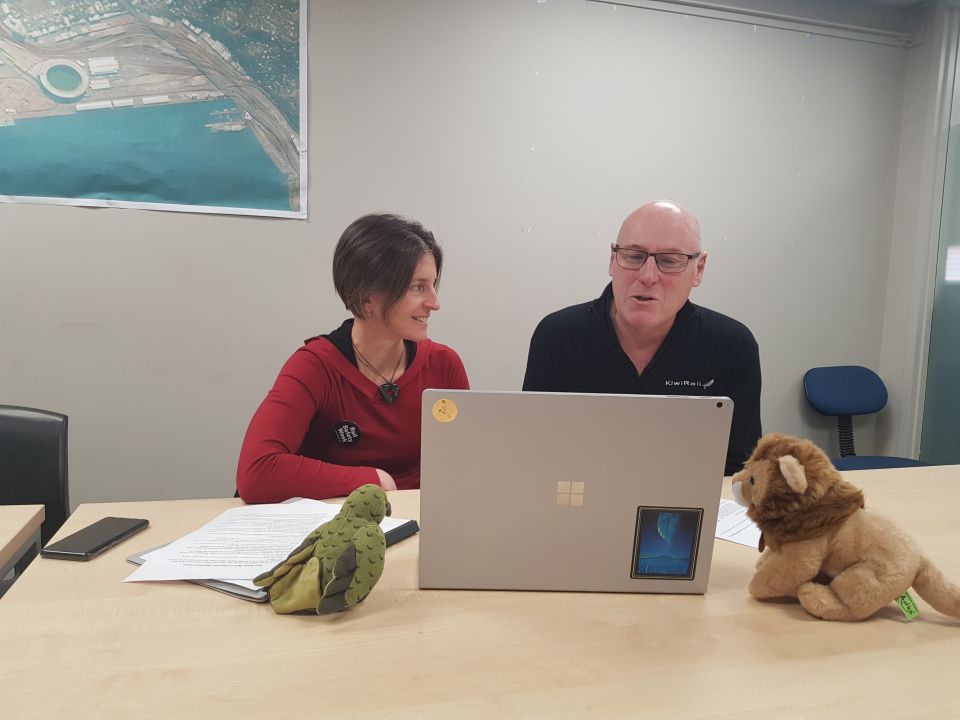
Shelley and Tony talk to Ranui School during the web conference. Image: LEARNZ.
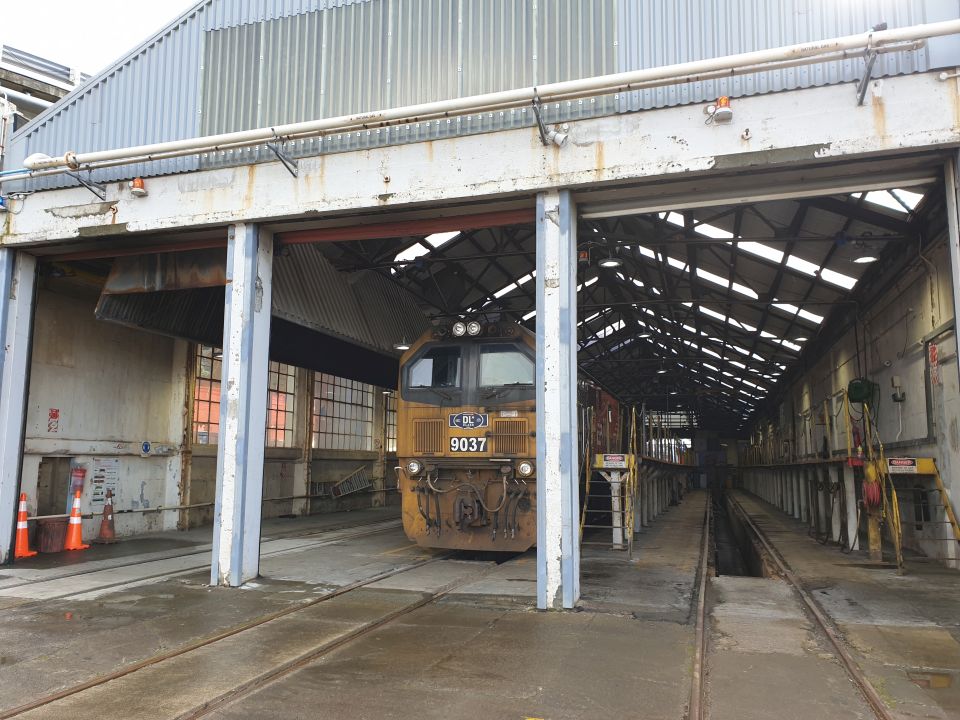
This is the Wellington mechanical depot where locomotives are re-fuelled, checked and repaired. Image: LEARNZ.
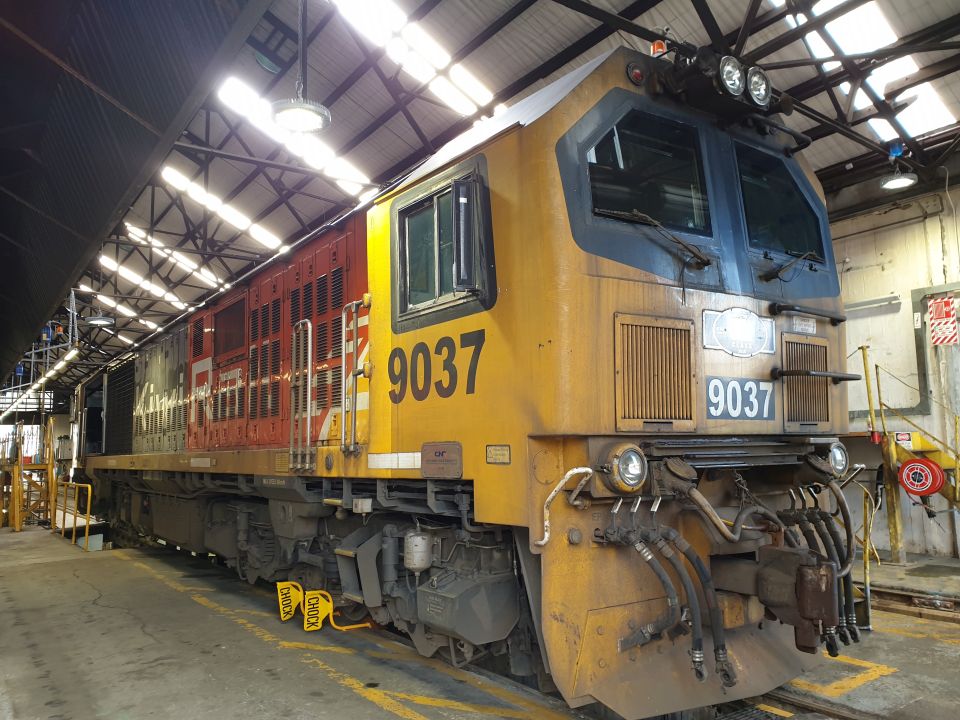
This locomotive is having its 18,000 kilometre check. Image: LEARNZ.
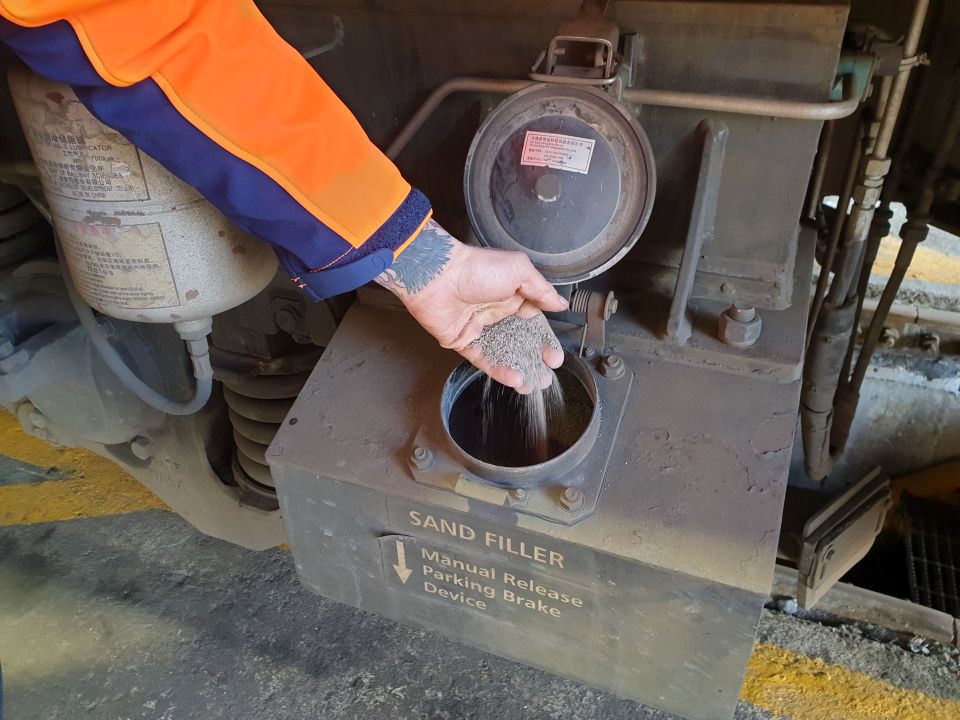
John shows you the sand box on a locomotive. What is this sand used for? Image: LEARNZ.
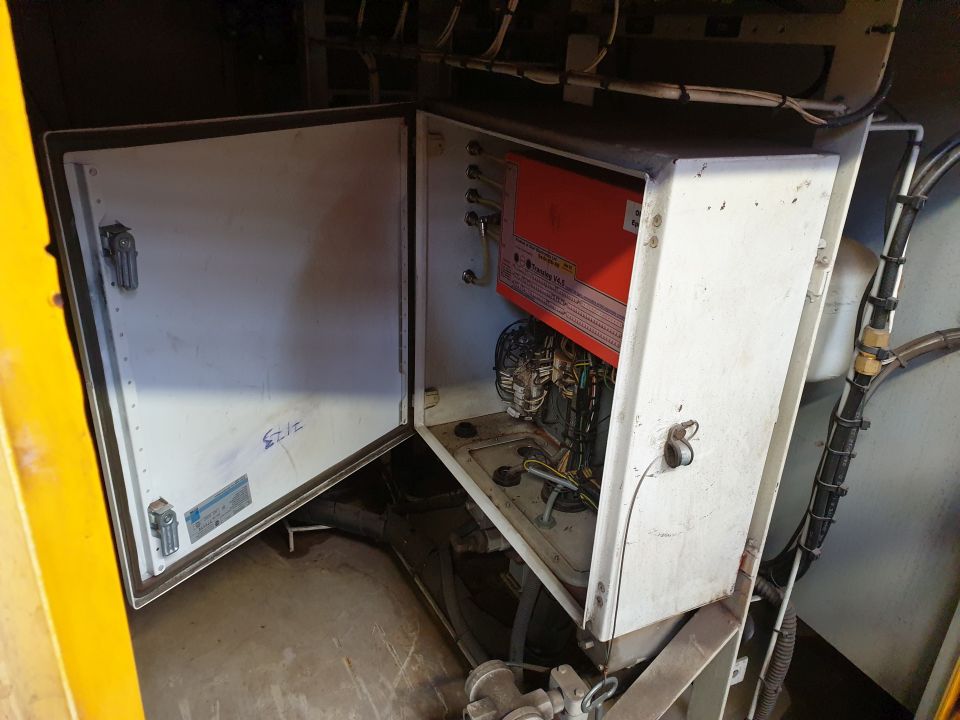
This is the tracklog on a locomotive. It is used to record information about how the locomotive is driven and how it operates. What would this information be used for? Image: LEARNZ.
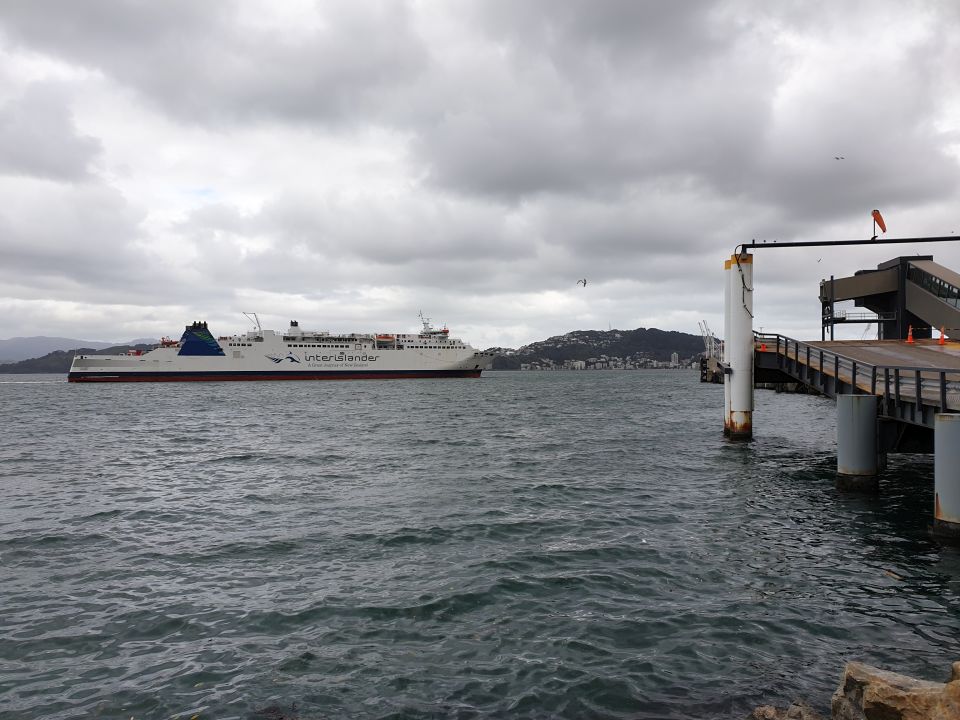
This interislander ferry is able to carry rail freight. Image: LEARNZ.
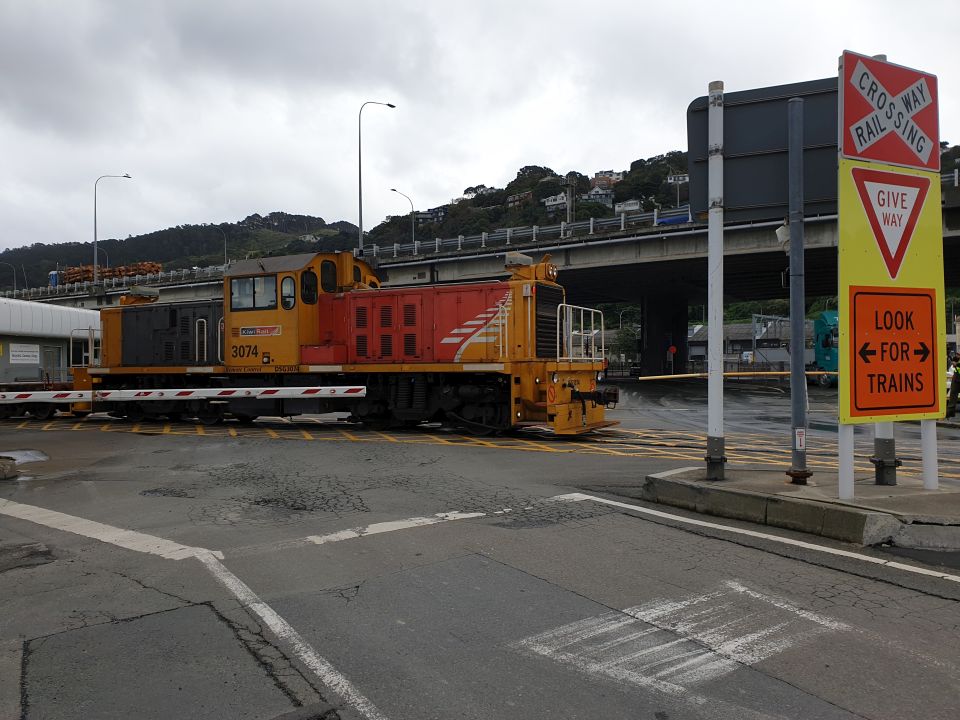
This remotely operated locomotive is used to shunt wagons on and off the ferry. Why do you think it is remotely operated? Image: LEARNZ.

Inside the ferry groups of wagons are unloaded using a remotely controlled shunting locomotive. Image: LEARNZ.
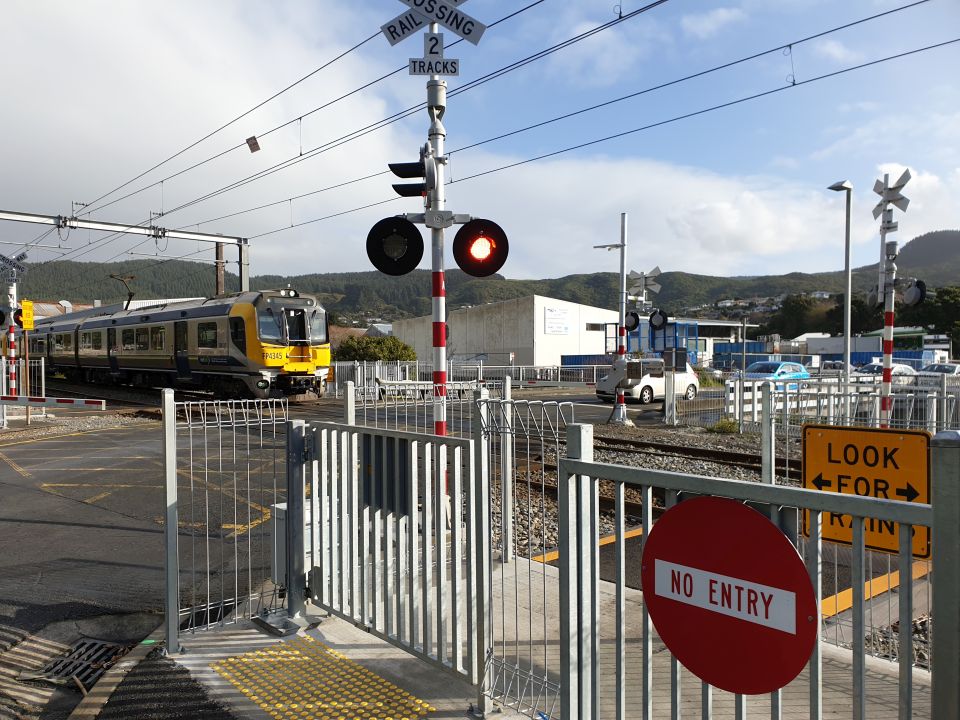
This level crossing in Tawa has gates that automatically close to stop people from crossing when a train is approaching. What other safety features does this crossing have? Image: LEARNZ.